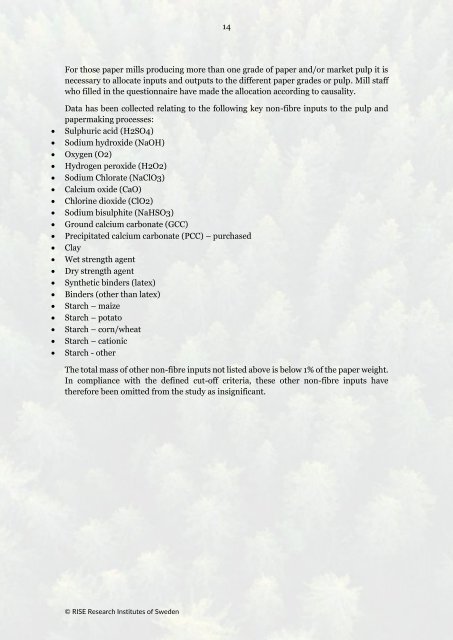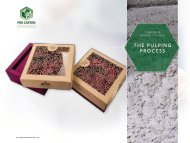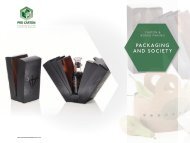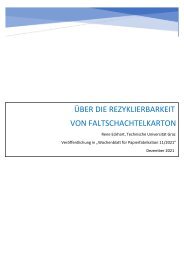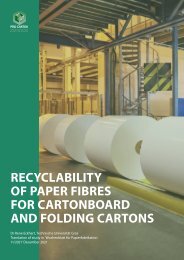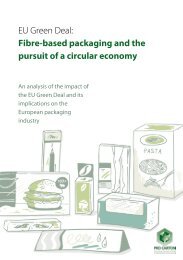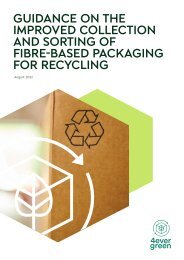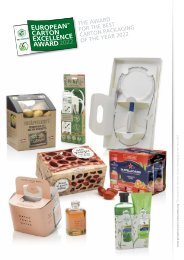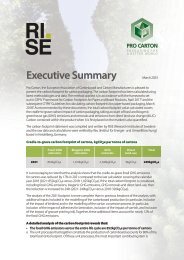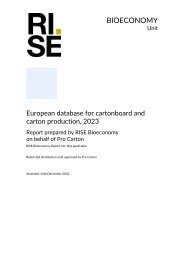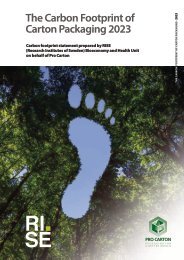European Database for Cartonboard and Carton Production 2023
You also want an ePaper? Increase the reach of your titles
YUMPU automatically turns print PDFs into web optimized ePapers that Google loves.
14<br />
For those paper mills producing more than one grade of paper <strong>and</strong>/or market pulp it is<br />
necessary to allocate inputs <strong>and</strong> outputs to the different paper grades or pulp. Mill staff<br />
who filled in the questionnaire have made the allocation according to causality.<br />
Data has been collected relating to the following key non-fibre inputs to the pulp <strong>and</strong><br />
papermaking processes:<br />
• Sulphuric acid (H2SO4)<br />
• Sodium hydroxide (NaOH)<br />
• Oxygen (O2)<br />
• Hydrogen peroxide (H2O2)<br />
• Sodium Chlorate (NaClO3)<br />
• Calcium oxide (CaO)<br />
• Chlorine dioxide (ClO2)<br />
• Sodium bisulphite (NaHSO3)<br />
• Ground calcium carbonate (GCC)<br />
• Precipitated calcium carbonate (PCC) – purchased<br />
• Clay<br />
• Wet strength agent<br />
• Dry strength agent<br />
• Synthetic binders (latex)<br />
• Binders (other than latex)<br />
• Starch – maize<br />
• Starch – potato<br />
• Starch – corn/wheat<br />
• Starch – cationic<br />
• Starch - other<br />
The total mass of other non-fibre inputs not listed above is below 1% of the paper weight.<br />
In compliance with the defined cut-off criteria, these other non-fibre inputs have<br />
there<strong>for</strong>e been omitted from the study as insignificant.<br />
© RISE Research Institutes of Sweden


